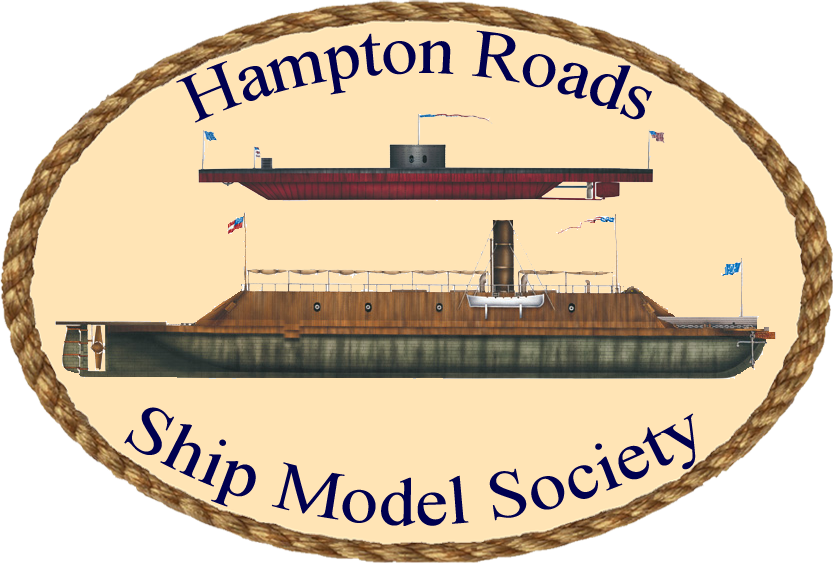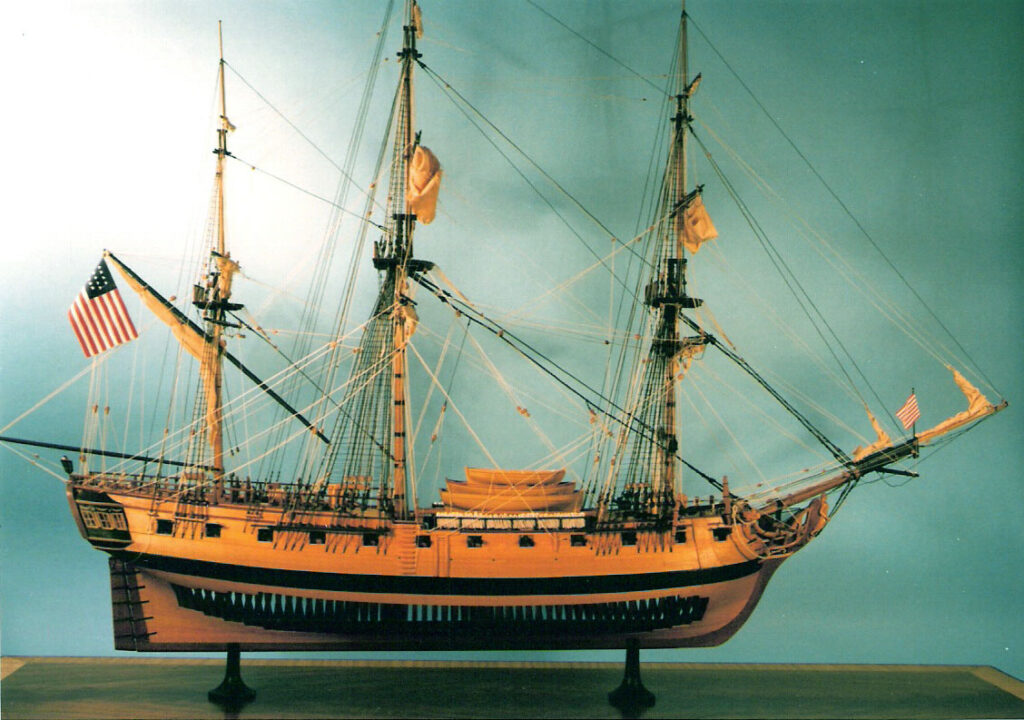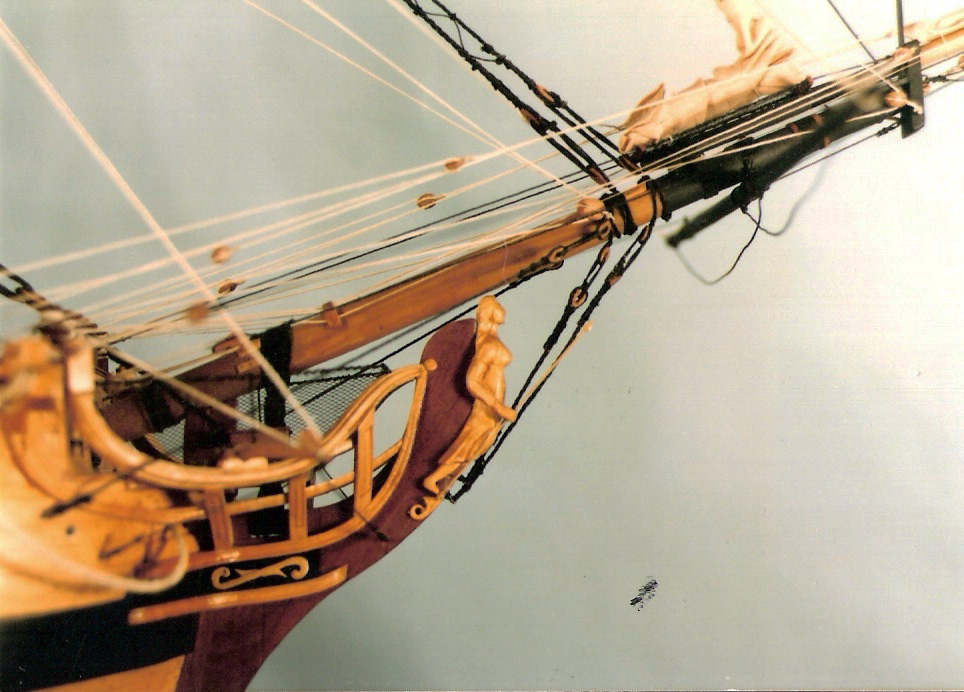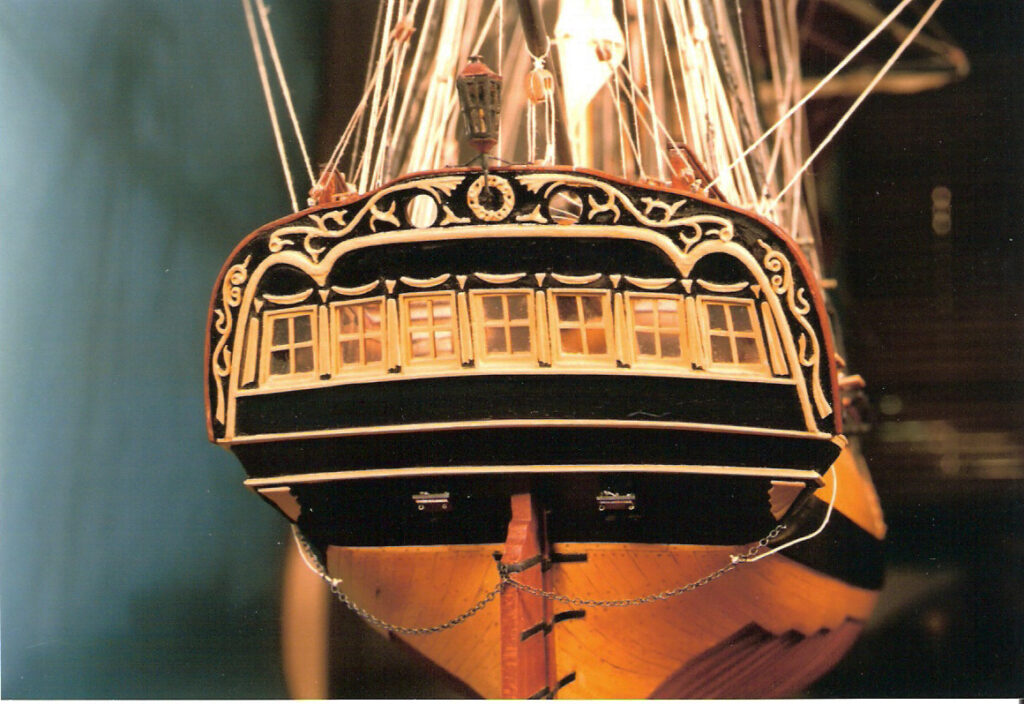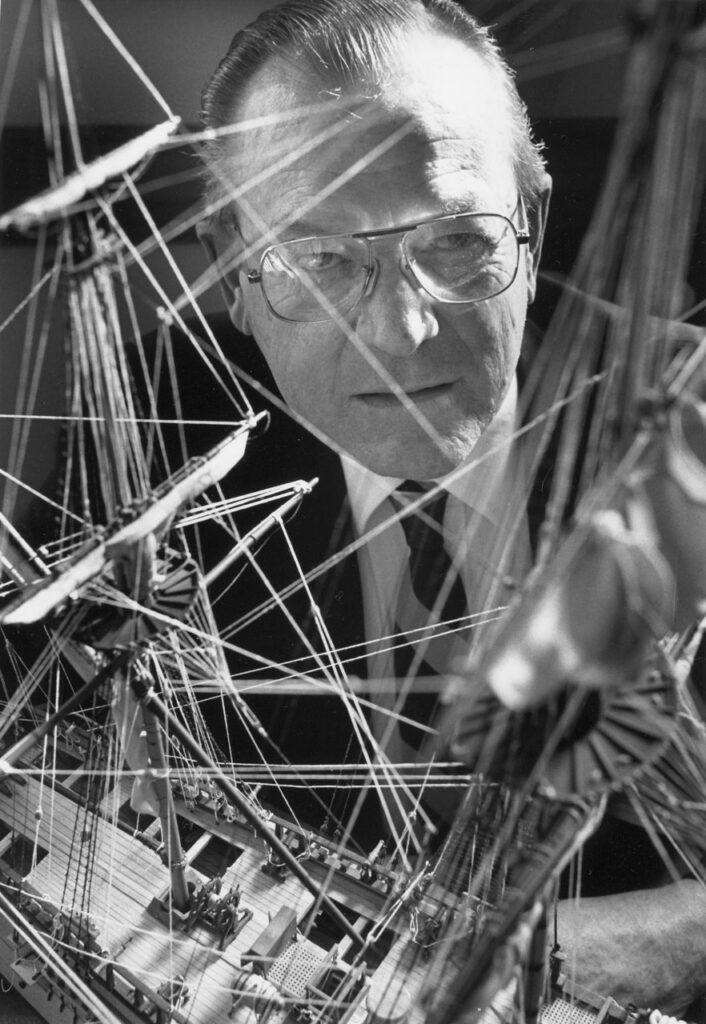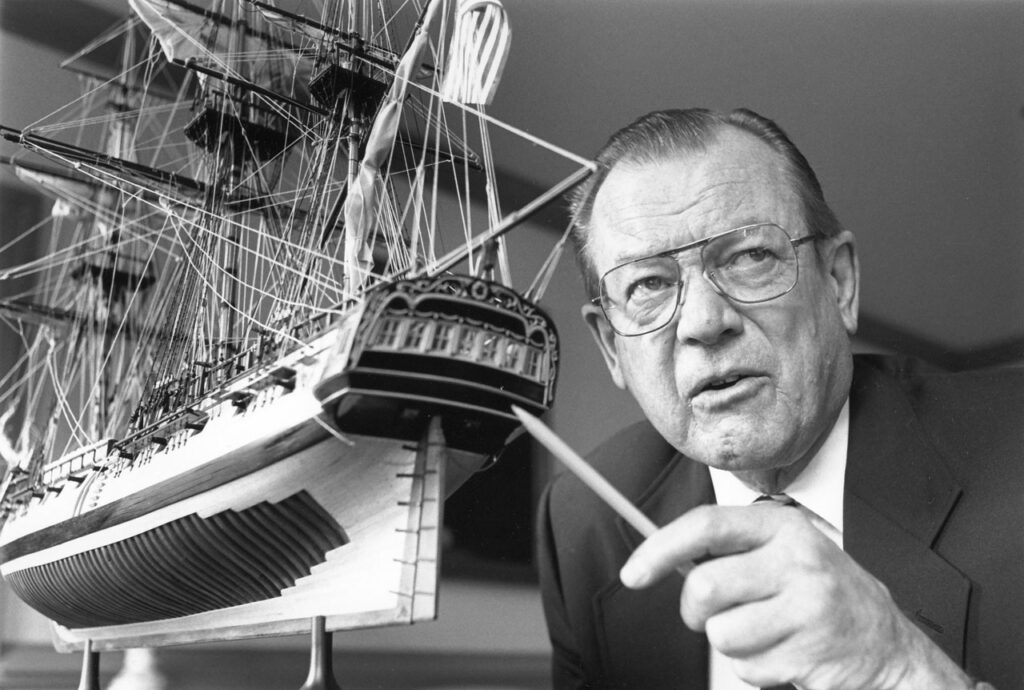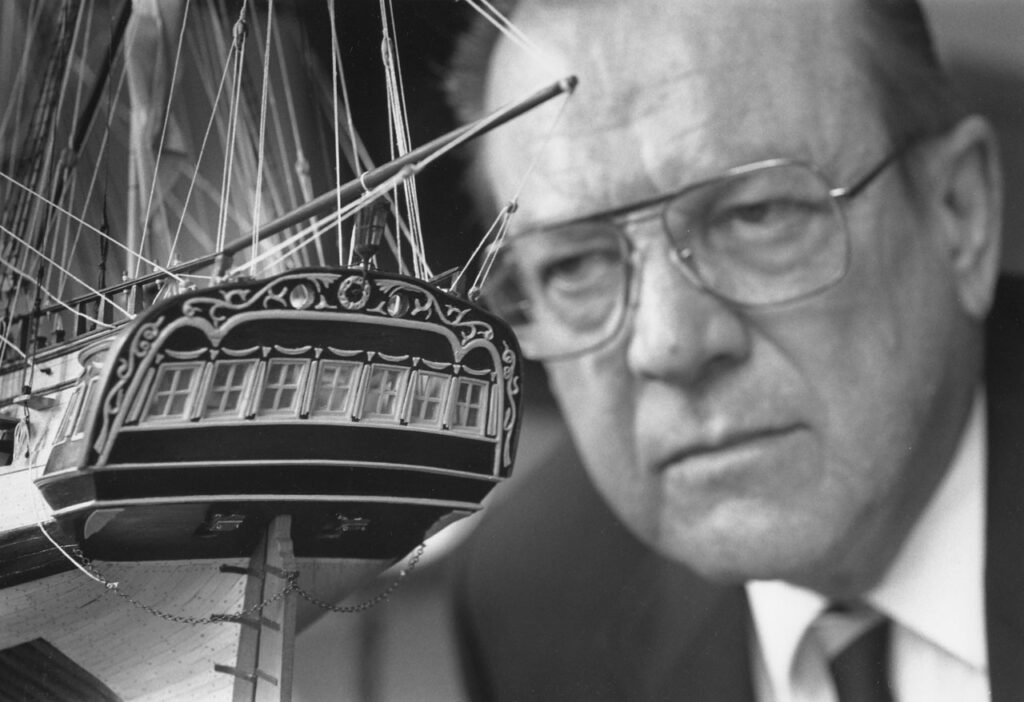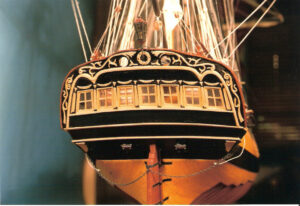
by Jack Bobbitt
Categories:
- Build type: [Scratch]
- Material: [Wood]
- Scale: [1:64 (3/16" = 1')]
- Subject Type: [Frigate]
- Era: [1700-1815]
- Nationality: [United States]
- Propulsion: [Sail]
About the Vessel
Virginia was a 28-gun frigate, one of 13 frigates authorized by the Continental Congress on 13 December 1775. She was laid down in 1776 at Fells Point, Maryland, by George Wells, launched that August, and commissioned in the spring of 1777.
After completion, she made several unsuccessful attempts to run the British naval blockade at the mouth of Chesapeake Bay. The final attempt was at night, and she ran aground Middle Ground shoal, near the city of Hampton, Virginia and lost her rudder. The next morning she was forced to surrender to the British frigate Emerald.
Virginia was repaired and eventually purchased by the Royal Navy as the 32-gun frigate HMS Virginia. She was She was assigned to the American coast and took part the capture of Charleston, South Carolina.
Model Images
Links
- Wikipedia
- Model of Constitution, another frigate from the War of Independence, by HRSMS member Gene Andes
- Model of Raleigh, another frigate from the War of Independence , by HRSMS member Gene Andes
Doctor sews up competition
Shipyard Bulletin, December 1990
Newport News Shipbuilding
The words finely penned in a ship’s log more than 200 years ago held the clues that helped a NNS physician win two international awards recently.
Clues of the ship’s details, down to its color scheme, were important when Dr. John M. “Jack” Bobbitt began to build his model of Virginia, a wooden frigate.
The finished product, a handsome model measuring 38 inches long and 33 inches high, won a silver medal in the scratchbuilt sailing ship category of the International Scale Ship Model Competition at the Mariners’ Museum.
Bobbitt also earned the Howard I. Chapelle Memorial Award given by the Nautical Research Guild for his outstanding documented research of Virginia.
“That’s my strong interest – going in and digging for information,” Bobbitt says. “We have a wealth of information in this area – the Mariners’ Museum as well as local historical societies.”
Bobbitt says about 900 hours when into the research of the original ship, including obtaining copies of the original building plans and the ship’s log from England. Another 3,958 hours were spend on the actual building of the model.
Construction of the model started in the fall of 1985 and ended this past June, just in time for the competition.
At a scale of three sixteenths of an inch in the model equaling one foot of the original vessel, the detail in Bobbitt’s’ ship is incredibly small. Its 28 brass cannons, for example, are less than an inch long, and Bobbitt turned them on a miniature lathe to achieve the detail he wanted. He even made the fine threads that are used as rigging from the masts.
As a scratchbuilt model, none of the components are prefabricated, as in kits. Bobbitt selected cherry to construct the ship’s framing, and boxwood, which is traditional in model making due to its fine grain, was used for decking and the tiny carvings. The spars and masts are made of lemon wood, while ebony and apple wood are used in other areas.
Bobbitt chose Virginia because it was built along the Chesapeake Bay (Baltimore) as one of the original 13 frigates authorized by the Continental Congress in 1775.
In 1778, Virginia ran aground (presumably at Thimble Shoals) and was captured by the British, recommissioned HMS Virginia and served in the British Navy.
“With that short American history, not a whole lot is known about the ship. That’s one of the reasons I wanted to build the model. Also, no one else has built one.”
Although he’s built doll houses and medieval houses before, his real love for ship models started when he was serving as a corpsman at a Navy hospital at the end of World War II. After his Navy tour, Bobbitt was able to squeeze in a model or two while going to medical school. Bobbitt has even built many of the special tools he uses in the intricate work.
In all, he’s built nearly a dozen ship models, and he’s given all but three of them away.
Why build museum-quality ship models for a hobby? “I find it very restful and relaxing to build a model. You can’t be thinking about any problems when you are working on something like this.”
